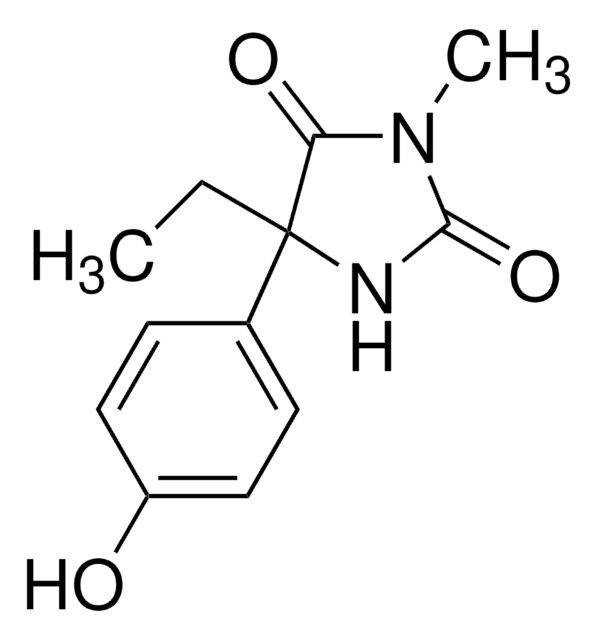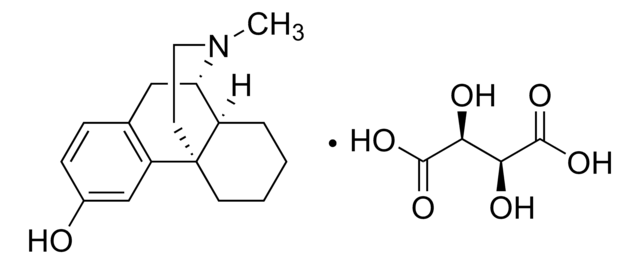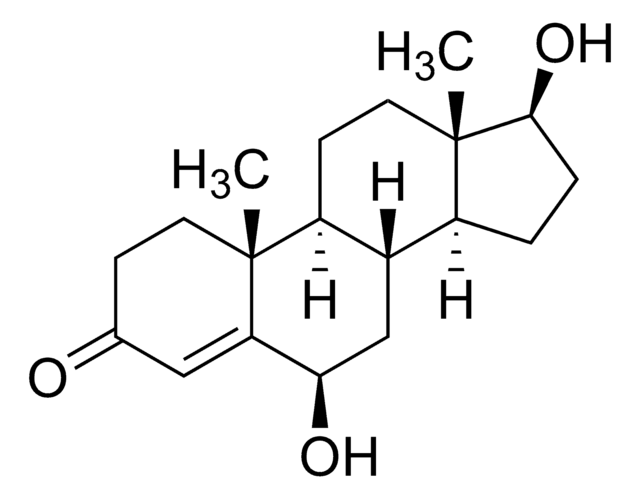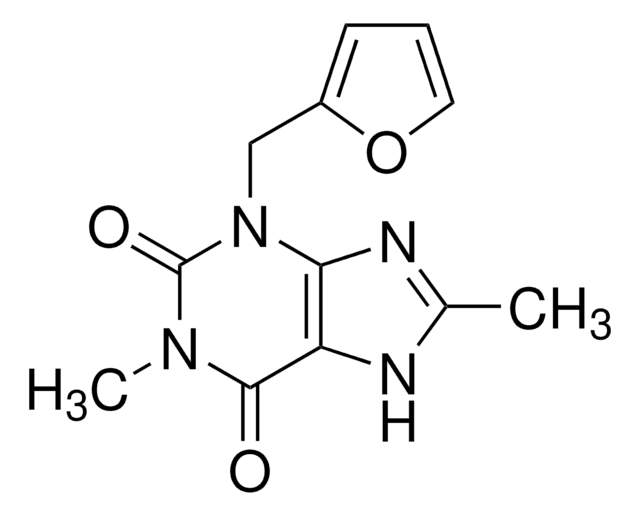D-039
N-Desethylamodiaquine dihydrochloride solution
1.0 mg/mL in methanol (as free base), ampule of 1 mL, certified reference material, Cerilliant®
About This Item
klasa czystości
certified reference material
Postać
liquid
Właściwości
Snap-N-Spike®/Snap-N-Shoot®
opakowanie
ampule of 1 mL
producent / nazwa handlowa
Cerilliant®
stężenie
1.0 mg/mL in methanol (as free base)
metody
gas chromatography (GC): suitable
liquid chromatography (LC): suitable
Zastosowanie
pharmaceutical (small molecule)
format
single component solution
temp. przechowywania
−20°C
ciąg SMILES
ClC1=CC=C(C(NC2=CC=C(O)C(CNCC)=C2)=CC=N3)C3=C1.Cl.Cl
InChI
1S/C18H18ClN3O.2ClH/c1-2-20-11-12-9-14(4-6-18(12)23)22-16-7-8-21-17-10-13(19)3-5-15(16)17;;/h3-10,20,23H,2,11H2,1H3,(H,21,22);2*1H
Klucz InChI
BCYBRFGUODDEGH-UHFFFAOYSA-N
Opis ogólny
Informacje prawne
Hasło ostrzegawcze
Danger
Zwroty wskazujące rodzaj zagrożenia
Zwroty wskazujące środki ostrożności
Klasyfikacja zagrożeń
Acute Tox. 3 Dermal - Acute Tox. 3 Inhalation - Acute Tox. 3 Oral - Flam. Liq. 2 - STOT SE 1
Organy docelowe
Eyes,Central nervous system
Kod klasy składowania
3 - Flammable liquids
Klasa zagrożenia wodnego (WGK)
WGK 2
Temperatura zapłonu (°F)
49.5 °F - closed cup
Temperatura zapłonu (°C)
9.7 °C - closed cup
Certyfikaty analizy (CoA)
Poszukaj Certyfikaty analizy (CoA), wpisując numer partii/serii produktów. Numery serii i partii można znaleźć na etykiecie produktu po słowach „seria” lub „partia”.
Masz już ten produkt?
Dokumenty związane z niedawno zakupionymi produktami zostały zamieszczone w Bibliotece dokumentów.
Klienci oglądali również te produkty
Nasz zespół naukowców ma doświadczenie we wszystkich obszarach badań, w tym w naukach przyrodniczych, materiałoznawstwie, syntezie chemicznej, chromatografii, analityce i wielu innych dziedzinach.
Skontaktuj się z zespołem ds. pomocy technicznej








